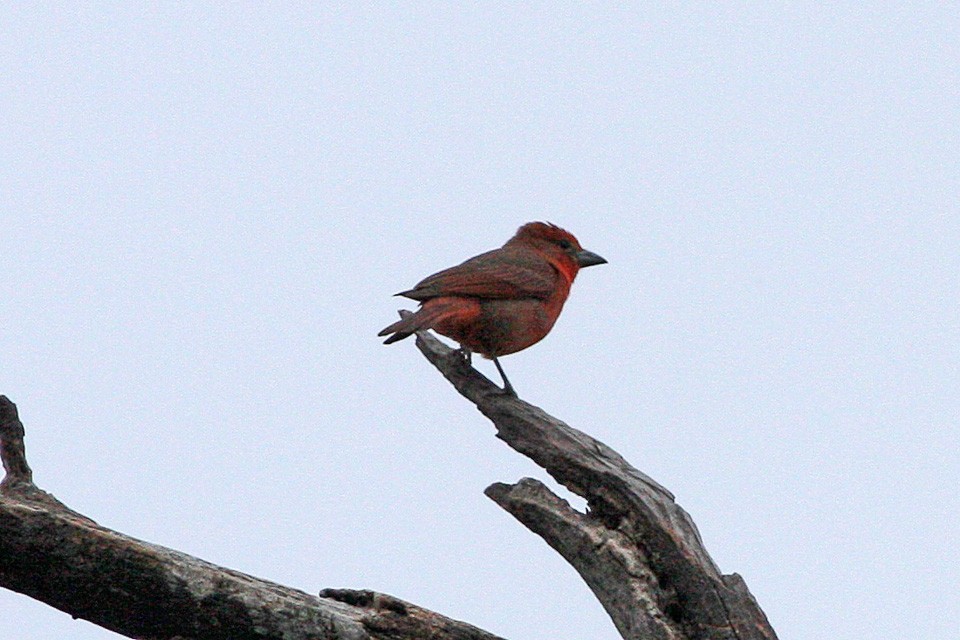Hepatic Tanager
A species of Northern Tanagers, Also known as Highland Hepatic Tanager, Lowland Hepatic Tanager, Tooth-billed Tanager, Red Piranga Scientific name : Piranga flava Genus : Northern Tanagers
Hepatic Tanager, A species of Northern Tanagers
Also known as:
Highland Hepatic Tanager, Lowland Hepatic Tanager, Tooth-billed Tanager, Red Piranga
Botanical name: Piranga flava
Genus: Northern Tanagers
Content
Description General Info
Description
Members of the northern group are larger and stockier than other Piranga tanagers and have a relatively short tail and a stout bill. Its brightest color is always on its forehead and throat. In all plumages, it has gray flanks, dusky cheeks, and a dark eye streak. The female is yellow, and the male is red. Its average weight is 38 g (1.3 oz). Its average wingspan is 31.8 cm (12.5 in) and length is 20.3 cm (8.0 in). 
Size
20 cm (8 in)
Colors
Black
Red
Gray
Orange
Nest Placement
Tree
Clutch Size
3 - 5 eggs
Incubation Period
1 brood
Feeding Habits
Hepatic Tanager forage methodically from lower branches to tree crowns, eating insects, spiders, and pursuing flushed prey mid-flight. In pairs or groups, they consume caterpillars, moths, butterflies, bees, ants, grasshoppers, plus berries, small fruits, seeds, flowers, and nectar.
Habitat
Hepatic Tanager's habitat spans open woodlands with a particular affinity for higher elevation pine or mixed pine-oak forests. These birds thrive in areas with a partially open canopy and sparser understory, inhabiting diverse forested regions that range from tropical and montane zones to riparian areas in thornscrub and savannas. Key vegetation includes various pine species, maples, firs, and hardwoods.
Nest Behavior
The female hepatic Tanager likely builds the nest, with some help from the male. Nest building, egg-laying, and parenting details are not specified but are crucial for enthusiasts to study further.
Nest Characteristics
Hepatic Tanager's nest is a broad, almost flat cup placed in a fork near the end of a tree branch, typically 15–50 feet up. It's constructed with grasses, twigs, plant fibers, and lined with grasses, pine needles, moss, hair, or flowers.
Dite type
Insectivorous
General Info
Feeding Habits
Bird food type
Bird Feeder Type

Platform
Behavior
Hepatic Tanager exhibit distinct territorial behaviors during spring, with males securing and defending areas using vocal displays and conspicuous perching, patrolling up to 3 acres. They are also known to exhibit defensive responses—scolding and chasing away intruders. Both sexes equally share in nesting responsibilities, such as incubation and raising of the young, with males actively foraging for and delivering food to females throughout courtship and incubation periods. While lacking specific courtship displays, hepatic Tanager maintain familial bonds post-breeding, often migrating together in small familial groups.
Species Status
Not globally threatened.
Scientific Classification
Phylum
Chordates Class
Birds Order
Perching birds Family
Cardinals Genus
Northern Tanagers Species
Hepatic Tanager 